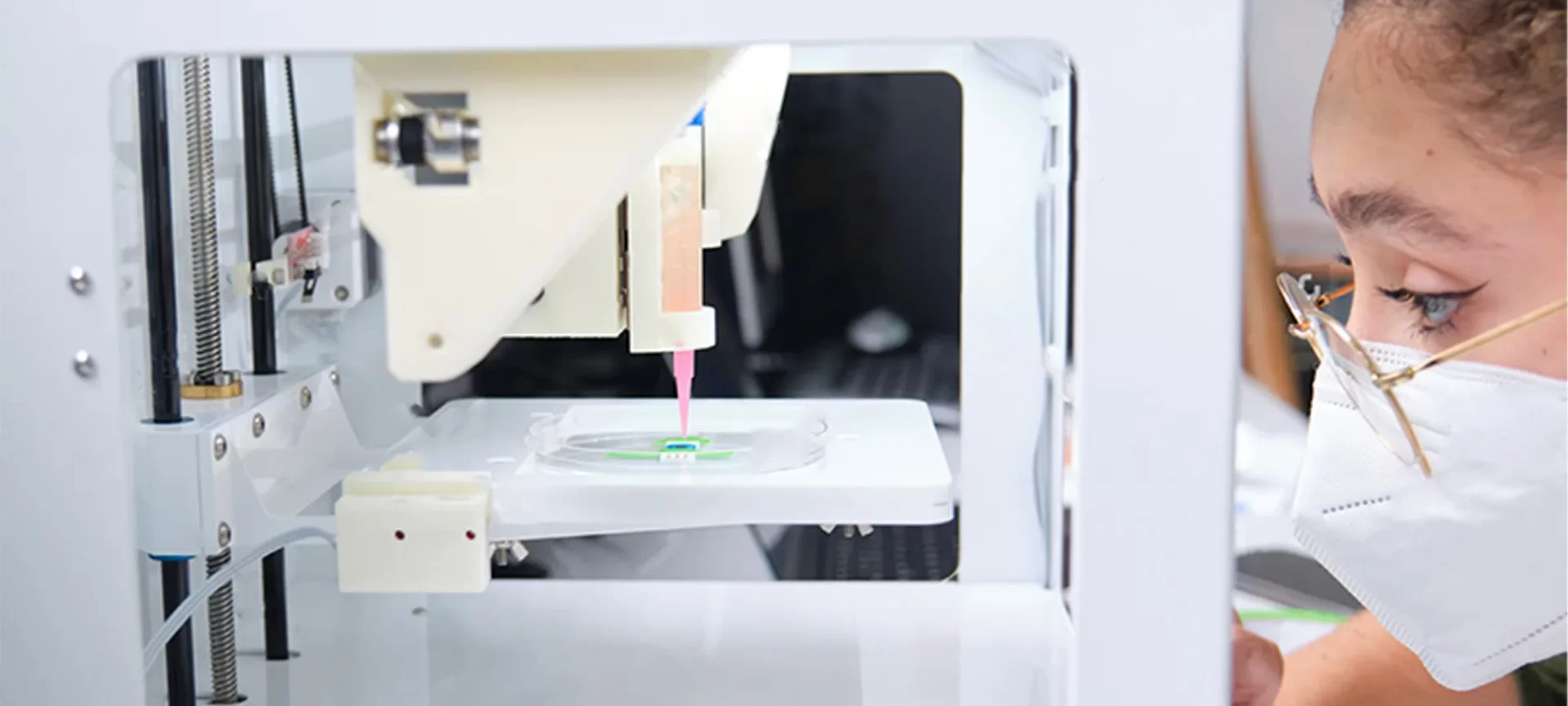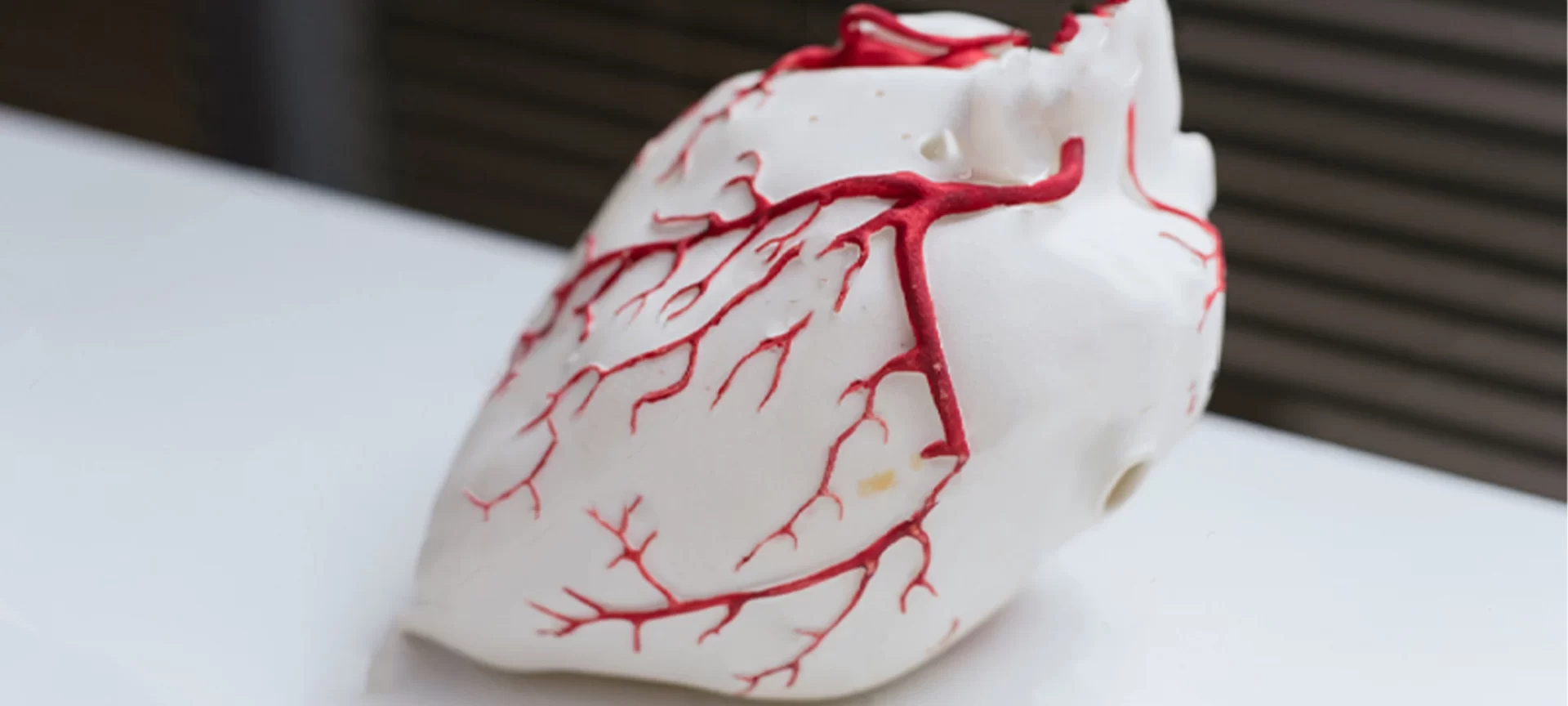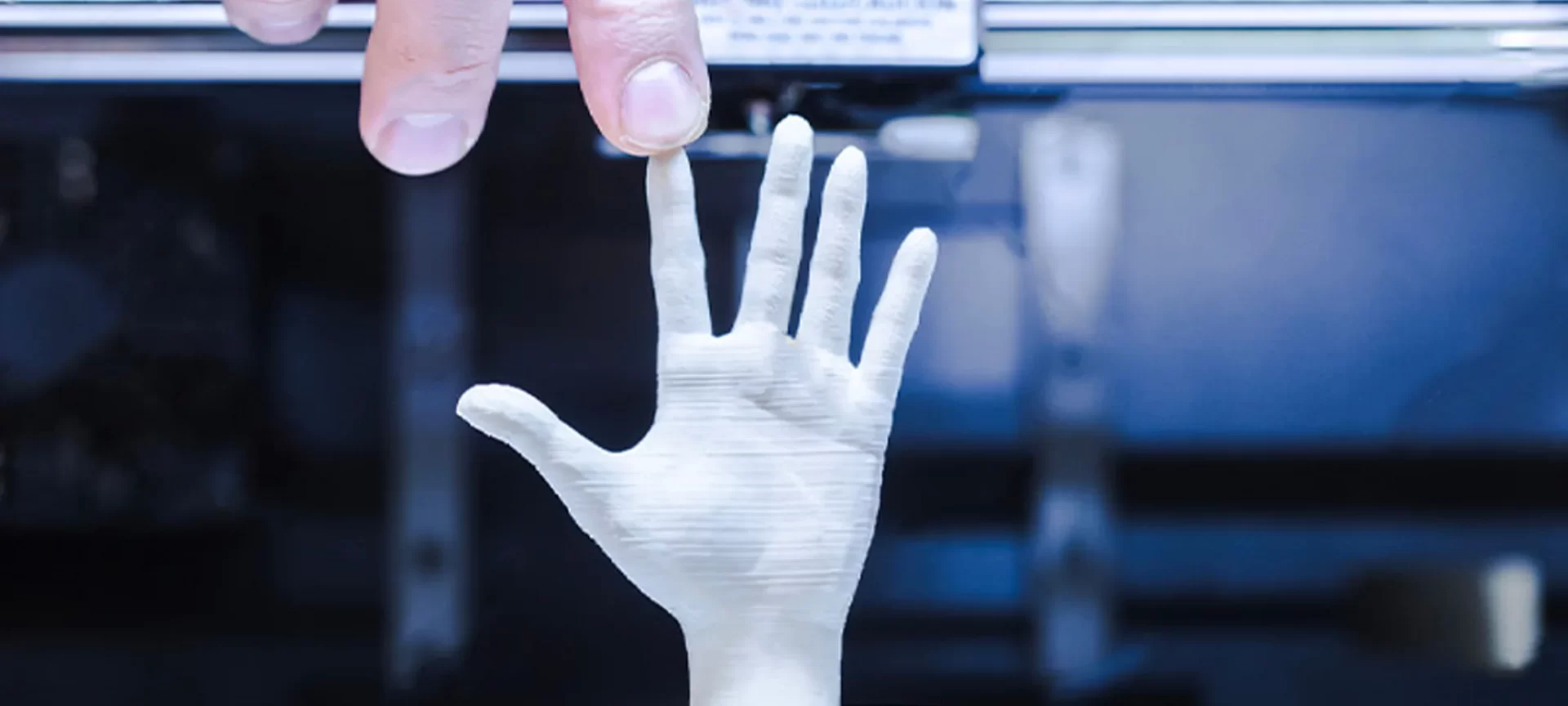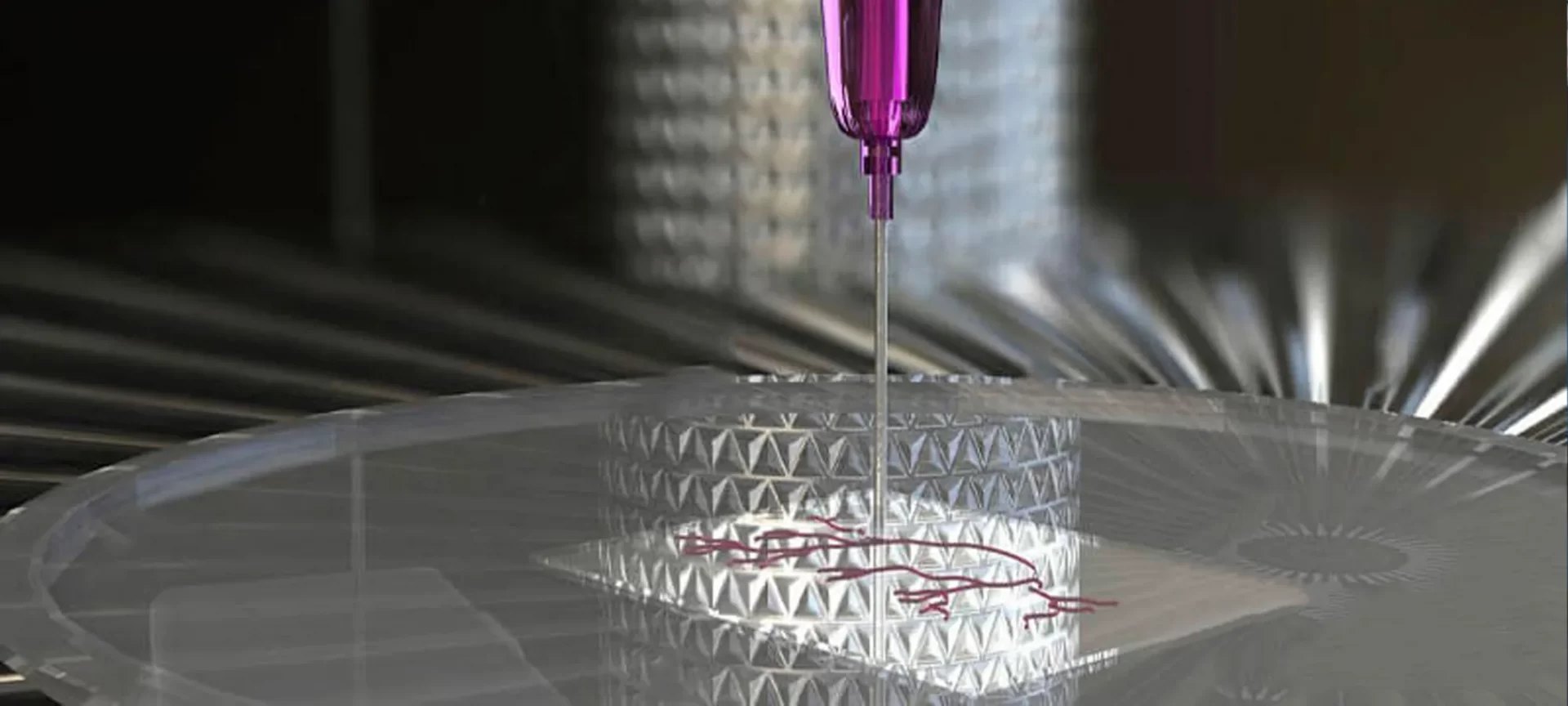Because of its potential applicability in practically every industry throughout the world, 3D printing technology has attracted a lot of investment and research support.
Over the previous decade, technology has improved tremendously, from making machine replacement components to designing prototypes from the ground up. Along with this unstoppable march into the future, some particularly intriguing prospective uses of the technology have emerged. 3D printing in biology is one of them.
So, let’s know more about how bioprinting is impacting medical research.
3D Printing in Biology
3D Bioprinting is a type of additive manufacturing that prints live structures layer by layer. Mimicking the behavior of natural living systems, the technology uses cells and other biocompatible materials as “inks,” also known as bio-inks.
Bioprinting is a hybrid of biological and 3D printing techniques. Bioprinting researchers are developing a niche that is possibly beyond the bounds of conceivable by using biomaterial engineering and applying unique production processes used for ordinary 3D printers.
How Does 3D Bioprinting Work?

3D bioprinting begins with a model of a building that is built layer by layer out of a bio-ink that is either blended with living cells or seeded with cells after the print is finished.
A CT or MRI scan, computer-aided design (CAD) software, or a file acquired from online websites can all be used as beginning models. The 3D model file is then sent into a slicer, which is a specialized type of computer application that analyses the geometry of the model and generates a sequence of thin layers, or slices, that when layered vertically form the shape of the original model.
After slicing a model, the slices are converted into path data and saved as a g-code file that can be submitted to a 3D bioprinter for printing.
Why is 3D Printing in Biology (Bioprinting) Important?

3D bioprinting can be used to make models and living tissue for a variety of applications. Model organs can be used to teach medical students about surgery and provide them with a realistic experience.
Because epithelial (skin) tissue is being bioprinted more effectively, persons who need skin grafts or comparable treatments after suffering from burns can use living tissue. Bioprinting may one day be used to create real, functioning organs for transplantation and to tackle problems associated with certain disorders.
New Innovations in 3D Bioprinting
Bioprinted structures, such as an organ-on-a-chip, can be used to investigate the human body functioning in vitro (outside the body), in 3D.
A 3D Bioprinted structure has a geometry that is closer to that of a naturally occurring biological system than a 2D in vitro study, making it more biologically relevant. It’s mostly employed in tissue engineering and bioengineering, as well as materials science.
There are other relevant innovations in bioprinting that are impacting the complete medical niche for the greater good.
3D Printing in HealthCare
The tie that exists between 3D printing and the healthcare industry is more akin to science fiction than reality.
3D printing technology is being used by medical professionals to create customized prostheses for patients, surgical cutting and drill guides, and even patient-specific copies of bones, organs, and blood arteries. Because each patient’s healthcare is unique, this helps drastically reduce procedure costs and time.
Burns and Skin Problems
Some bioprinting techniques have progressed from the lab to clinical testing. Cellink teamed up with GE Healthcare and Ume University last year to start treating burn patients using skin bioprinted from their own cells. The goal of the collaboration is to create transplantable skin constructions that will improve the quality of life for burn sufferers.
Medicine
A viable solution to the organ transplant waiting list is urgently needed. The scientific community has already succeeded in bringing together multidisciplinary teams of researchers, physicians, and engineers to tackle some of humanity’s most pressing problems, and 3D bioprinting is an exciting new technology with the potential to erase the organ transplant waiting list.
As bioprinting advances, it will be able to 3D print skin and bone grafts, organ patches, and perhaps whole replacement organs using a patient’s own cells.
Personalized and regenerative medicine are becoming increasingly popular, and 3D bioprinting will help doctors and researchers better focus therapies and improve patient outcomes.
Things We Can 3D Print in Medicine Right Now
The Role of 3D Printing in Medical Applications
Pharmaceutics
For pharmaceutical research, 3D bioprinting offers a faster, less expensive, and more biologically relevant to humans while avoiding animal testing.
How to 3D Print an Organ?
Researchers scan the patient’s organ to identify the size and shape that is unique to them. Then they build a scaffold for the cells to grow on in three dimensions and then add cells from the patient to it. That’s arduous, time-consuming work that could take up to eight weeks.
Finally, a bioreactor provides the best conditions for cells to grow into organs. The scaffold has already vanished or will vanish soon after surgery when surgeons ultimately insert the organ in the patient.
What Are the Applications of 3D Bioprinting?

Because of its potential applicability in every industry throughout the world, 3D printing technology has attracted a lot of investment and research support. Over the previous decade, this technology has improved tremendously, from making machine replacement components to designing prototypes from the ground up.
Precision Medicine
It can be used in a variety of ways in precision medicine, including the creation of personalized organs, skin grafts, and mechanical parts, as well as the printing of targeted nanoparticles, meals, and medications that are tailored to a person’s microbiota and physiology. This will be one of the catalysts for the next generation of individualized healthcare innovation.
Organogenesis
To mimic the formation of human organs, 3D printing will be used to generate anatomical structures in cell cultures. It will save numerous lives by enabling speedier transplants that are compatible and do not require lifelong anti-rejection therapy.
The majority of organ donors come from car accidents. As a result, self-driving automobiles would generate insurmountable shortages, making organogenesis a must-have.
People may soon be able to employ 3D printing to address one of the world’s most pressing issues: hunger relief. 3D-printed meals provide a long-term solution for our rising population.
Oil and powder cartridges will be utilized to make nutritious meals that will provide people with the calories they require to thrive. Because the cartridges have a 30-year shelf life, this approach will also help reduce food waste.
What Are the Breakthroughs of 3D Bioprinting?

Living Skin
Rensselaer Polytechnic Institute in New York developed a method for printing living skin that may be used in skin grafts and adapts to the tissue type of the patient. Their innovative bioprinting method promises to make artificial tissue at the level needed for bodily integration
. More complicated organs may be artificially generated and employed in transplants, compatible with the normal human body, thanks to living biomaterial like that given in this method.
Printing Human Heart
Engineers at Carnegie Mellon University’s College of Engineering claimed in November 2020 that they had successfully printed a realistic human heart that was sturdy enough for surgeons to practice performing heart surgery on.
This is a big advancement because previously, bioprinted organ models were either too stiff or too soft to be useful.
Vascular Tissue
Researchers at Harvard University’s Wyss Institute developed a method for producing vascular—or blood vessel—tissue that was nearly ten times thicker than earlier bioprinted vascular tissue.
Endothelial cells (cells that line the inner wall of blood arteries) were placed inside a silicone mold and a multi-material approach was used to achieve this.
Testing Drugs on Animals
Bioprinting may potentially reduce the requirement for animal testing of novel medications. It’s a good market potential for pharma companies to save billions of dollars by replacing lengthy and expensive clinical trials that often yield no results.
In many circumstances, testing medications on mice, rabbits, or other animals are ineffective since the substance may have a different effect on humans.
3D printed tissue, on the other hand, has proven to be an excellent method of testing new medications, allowing drugs to be extensively evaluated and brought to market more quickly without causing harm to animal test subjects.
What Are the Challenges of 3D Bioprinting?
Despite the fact that 3D bioprinting is progressing at a commendable rate, with researchers working to develop new printing modalities and improve existing ones, there is still a slew of hurdles to face.
Only a few bio-inks are now available that are both bioprintable and adequately reflect the tissue architecture required to restore organ function after printing.
While bio-inks manufactured from organically sourced hydrogels promote cell growth, synthetic hydrogels are more durable mechanically. As a result, hybrid bio-inks should be built to incorporate all of these features.
The Conclusion
It’s difficult to foresee all of the ways that a revolutionary technology like bioprinting will change how doctors treat their patients. But some of the milestones that researchers have already reached, hint that the consequences will be significant.
3D printing in biology is a burgeoning sector with a lot of potentials. Teams from all across the world are attempting to improve this technology, which can give realistic surgical models, living tissue for drug testing, and nutrients to help mend existing tissue. Bioprinting could one day create functional organs for transplantation, saving lives and alleviating the current organ scarcity.







